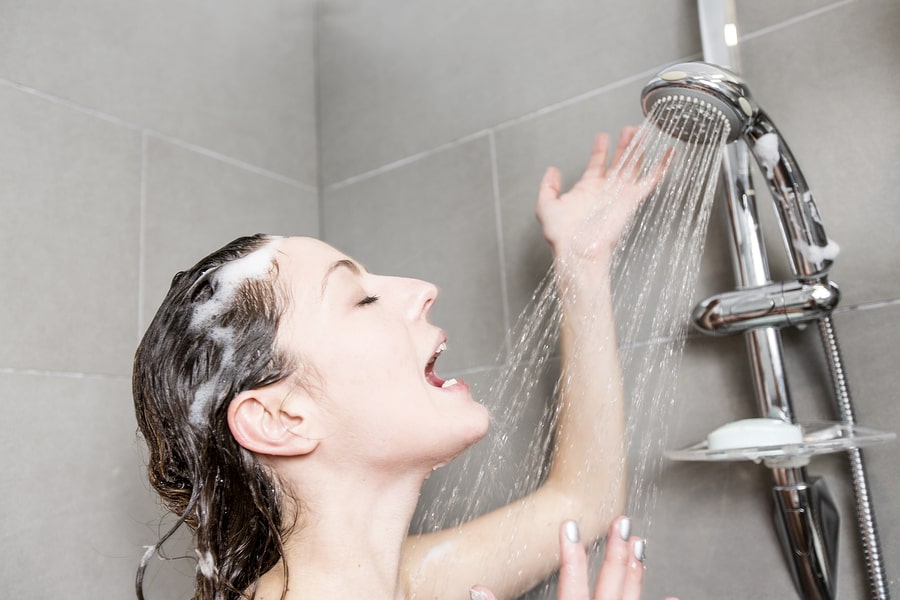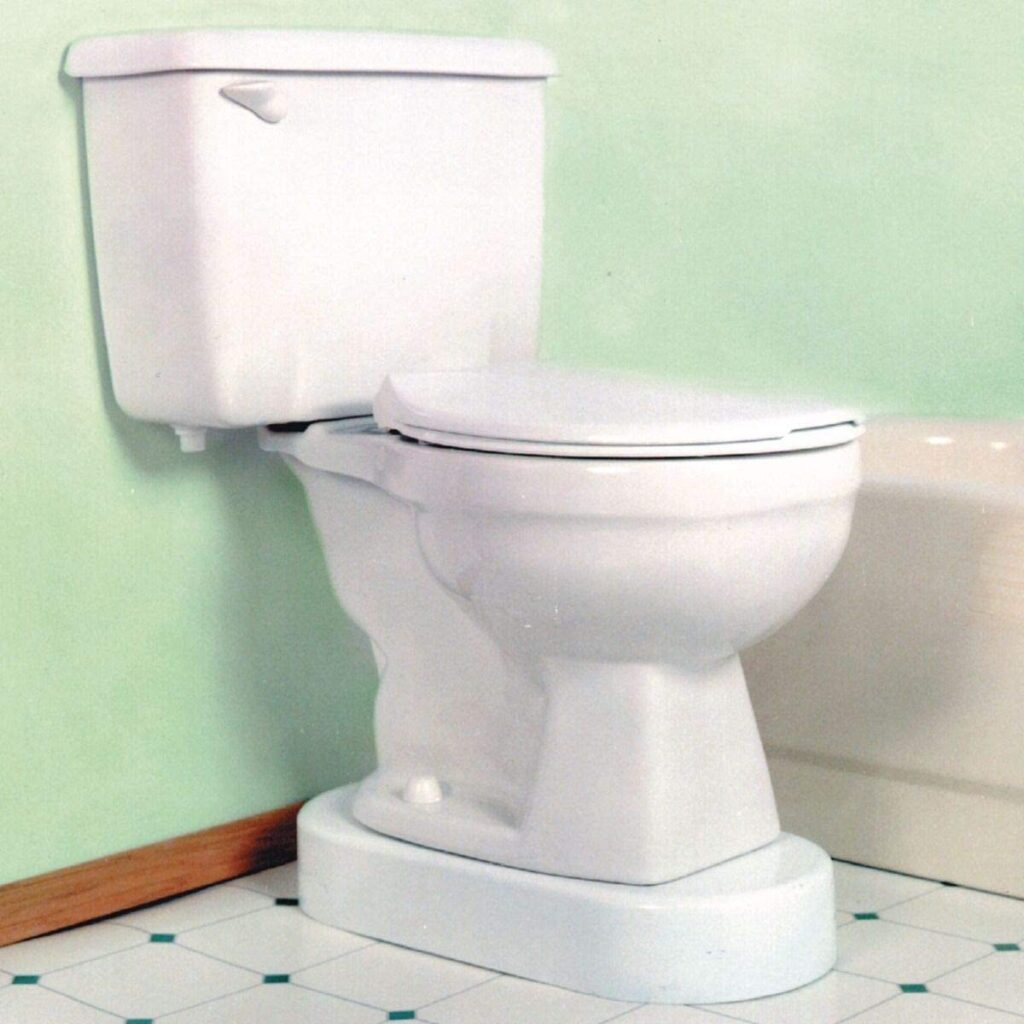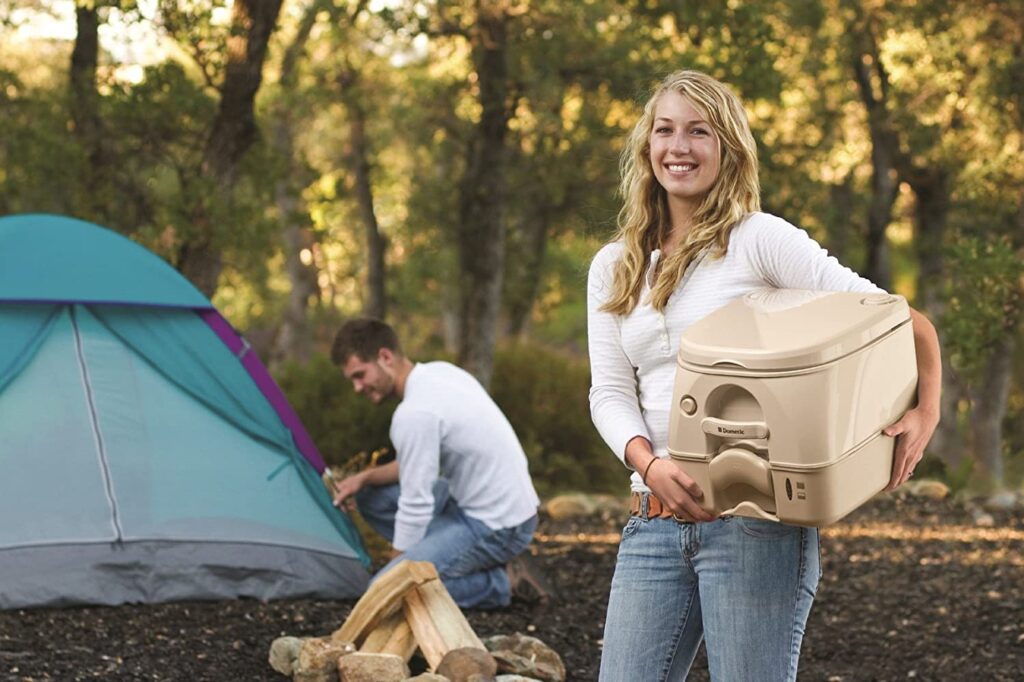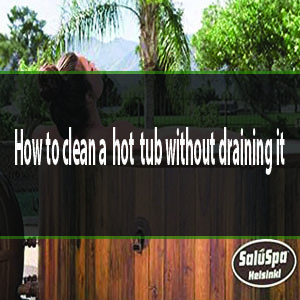 It’s one of the most frustrating moments: you step into the shower, eager for a warm, relaxing experience, only to be greeted by cold water. Whether you’re trying to rinse off after a long day or simply want a refreshing start to your morning, no hot water can throw off your routine. Luckily, this common issue is often fixable with a bit of troubleshooting. Understanding the root cause of the problem can help you solve it yourself, or determine when it’s time to call in the professionals.
It’s one of the most frustrating moments: you step into the shower, eager for a warm, relaxing experience, only to be greeted by cold water. Whether you’re trying to rinse off after a long day or simply want a refreshing start to your morning, no hot water can throw off your routine. Luckily, this common issue is often fixable with a bit of troubleshooting. Understanding the root cause of the problem can help you solve it yourself, or determine when it’s time to call in the professionals.
Table of Contents
Possible Causes of Hot Water Issues in Showers
1. Water Heater Malfunction
Your water heater is the most likely culprit if your hot water is not working. Water heaters can malfunction for various reasons, and they often give clear signs when something is wrong.
What could go wrong with your water heater?
- Sediment Buildup: Over time, minerals in the water can settle at the bottom of the tank, which can affect the efficiency of your water heater.
- Pilot Light Issues: For gas heaters, if the pilot light goes out, no hot water will be produced.
- Heating Element Failure: In electric heaters, the heating element might break down, leaving you with only cold water.
Signs your water heater needs repair:
- Strange Noises: If you hear popping or rumbling noises, this could indicate a sediment buildup inside your water heater.
- Leaks: Any leaks around your water heater could signal a malfunctioning part or even corrosion inside the tank.
- No Hot Water: This is the most obvious sign that your heater may be broken.
Solution: Simple fixes or when to replace it
- Flush the Tank: If sediment buildup is the issue, you can flush the tank to remove debris and improve performance. This can be done with a hose attachment and a bucket, or you can get a water heater flush valve kit for easier maintenance.
- Check the Pilot Light: For gas heaters, make sure the pilot light is on. If it keeps going out, it might need a new thermocouple.
- Replace the Heating Element: If the element is broken, it will need to be replaced. A heating element wrench can make this job easier.
2. Thermostat Issues
Your water heater’s thermostat controls the temperature of the water. If it’s not working properly, you might find that your hot water is either too hot or, in the case we’re discussing, nonexistent.
Why the thermostat might not be working properly:
-
Faulty Thermostat: Over time, thermostats can wear out or get stuck at the wrong temperature.
-
Temperature Settings Too Low: Sometimes, the thermostat setting might have been lowered by accident or by someone else in the house.
Solution: Adjusting settings and testing temperature
-
Check and Adjust the Thermostat: Check your thermostat’s setting and ensure it’s set to an appropriate temperature (usually 120°F or 49°C for most households). If it’s too low, simply raise it.
-
Test the Water Temperature: Turn on the hot water and test it with a thermometer. If it’s still cold after adjusting, the thermostat may need to be replaced. For a good quality thermostat for water heaters, look for adjustable models with easy-to-read displays, which can help you troubleshoot more effectively.
3. Plumbing Problems
Sometimes, the issue isn’t with the water heater itself but with the plumbing. Clogged pipes or faulty valves can prevent hot water from flowing properly to your shower.
Clogged Pipes or Valve Issues Leading to Inconsistent Hot Water Flow
-
Clogged Pipes: Over time, pipes can become clogged with minerals or debris, restricting water flow.
-
Valve Issues: A malfunctioning valve can prevent hot water from reaching your showerhead, resulting in cold water flow.
Solution: Flushing out the pipes or replacing damaged valves
-
Flush the Pipes: If you suspect clogged pipes, try flushing them with a pipe cleaning brush. If this doesn’t work, you may need to replace the section of pipe.
-
Replace the Valve: If the valve is stuck or not allowing hot water through, you may need to replace it. You can use a shower valve wrench to remove and install a new one.
4. Electrical Issues
For homes with electric water heaters, electrical malfunctions can be a major cause of hot water problems.
Electric Water Heater Malfunctions
-
Tripped Circuit Breaker: If your water heater is connected to a circuit breaker, it could trip, cutting power to the heater.
-
Blown Fuse: Similar to a breaker, a blown fuse can stop your electric water heater from working.
Solution: Checking the circuit breaker or resetting your system
-
Check the Breaker: Go to your home’s electrical panel and check if the breaker for your water heater has tripped. If it has, reset it.
-
Replace the Fuse: If the fuse is blown, it will need to be replaced. You can find replacement fuses at most hardware stores.
How to Troubleshoot Hot Water Problems in the Shower
1. Check the Water Heater
-
Reset the heater and check settings
If the water heater isn’t working, start by resetting it. For electric heaters, you can turn the power off and on again. For gas heaters, check if the thermostat is set to the right temperature (usually around 120°F or 49°C). If it’s too low, turn it up. -
Inspect the pilot light (for gas heaters)
If you have a gas water heater, check if the pilot light is on. If it’s out, follow the manufacturer’s instructions to relight it. Some models may have a reset button or a safety feature that needs to be reset. -
Action Step: Turn off the power, reset, and check the thermostat
Start by turning off the power to your water heater. Wait a few minutes, then turn it back on. Check the thermostat to ensure it’s set to an appropriate temperature. If the problem persists, it may be time to check the thermostat or heating element.
2. Inspect the Shower Valve
-
How to check if the valve is set correctly
The shower valve controls the flow of hot and cold water. If it’s set incorrectly or malfunctioning, it can prevent hot water from flowing properly. Check the valve settings to ensure it’s allowing hot water to flow. -
Clean or replace the valve if necessary
If the valve is clogged with mineral deposits or worn out, it might need to be cleaned or replaced. A valve cleaning kit can help remove debris or mineral buildup. If it’s damaged, replacing it may be the best option. -
Action Step: Examine for leaks or worn-out components
Look for any leaks around the valve or worn-out rubber seals. If you notice any, replacing the seals or the entire valve can fix the issue. A shower valve replacement kit can be useful for this job.
3. Test the Thermostat
-
Adjusting and testing the thermostat settings
Sometimes, the thermostat can be set too low, which results in cold water. Check the thermostat to ensure it’s set to the appropriate temperature for hot water. If the thermostat is digital, make sure it’s functioning properly. -
Action Step: Lowering or raising the thermostat to test
Try adjusting the temperature settings on the thermostat and test the hot water again. If the water is still cold or too hot, the thermostat might need to be repaired or replaced. You can also use a digital thermometer to test the water temperature.
4. Check for Leaks in the Plumbing
-
Visual inspection of visible pipes and connections for leaks
Examine the pipes under the sink or around the water heater for any visible leaks. Sometimes, a small leak can prevent hot water from reaching your shower. -
Solution: Tighten connections or replace worn parts
If you notice any leaks, tighten the connections or replace any worn-out parts like seals or pipes. For larger leaks, you may need to call a plumber to replace sections of pipe or install a new valve.
When Should You Call a Professional?
1. Common Signs to Call a Plumber
-
Persistent cold water, despite troubleshooting
If you’ve tried troubleshooting and the hot water still isn’t working, it might be time to call a plumber. Continuous cold water issues could indicate a bigger problem with the water heater or plumbing. -
Water heater leaking or making unusual noises
If your water heater is leaking or making strange noises (like popping or rumbling), it’s a sign that there could be sediment buildup or a more serious internal issue. A professional can diagnose and repair the issue to prevent further damage.
2. Importance of Hiring a Professional: Don’t risk further damage
While it’s tempting to continue trying to fix the problem yourself, some issues with water heaters and plumbing require professional knowledge. A licensed plumber can diagnose the issue accurately and safely, preventing costly repairs in the future. If you’re unsure, don’t hesitate to call a professional to avoid causing more harm.
Preventative Maintenance to Avoid Hot Water Issues
1. Water Heater Maintenance
-
Regular flushing to remove sediment build-up
Over time, minerals in the water can settle at the bottom of your water heater tank, reducing its efficiency. Regular flushing helps remove this sediment, improving performance and extending the life of the heater. -
Replacing parts like the anode rod to extend the life of your heater
The anode rod protects your water heater from corrosion. Over time, it can wear out. Replacing it regularly ensures that your water heater continues to work efficiently and helps prevent leaks or damage from corrosion.
2. Checking Shower Valves and Pipes Periodically
-
Inspecting your shower valve and connections for wear and tear
Just like your water heater, your shower valve and pipes can degrade over time. Regular inspections help catch any leaks or worn-out components before they become bigger issues. -
Action Step: Lubricate or replace valve parts every couple of years
Apply a little lubricant to the moving parts of your shower valve to prevent it from sticking or wearing out. If the valve shows signs of damage, it’s time to replace it. A well-maintained valve ensures hot water flows smoothly.
3. Ensuring Proper Insulation
-
Insulating pipes to avoid heat loss and prevent freezing
If you live in a colder climate, insulating your pipes is crucial. Without insulation, hot water can lose heat as it travels through pipes, and in extreme cold, pipes may freeze, causing a blockage. -
Solution: Adding insulation around pipes in colder climates
Installing pipe insulation is an easy and cost-effective solution to prevent heat loss and protect against freezing. You can find pipe insulation kits at most hardware stores or online for simple installation.
Energy-Saving Tips for Your Hot Water System
1. Water Heater Settings
-
Lowering the temperature to save energy and still enjoy hot showers
You don’t need your water heater running at full blast to enjoy a hot shower. Lowering the temperature to 120°F (49°C) is usually sufficient, and it can help you save energy and money. -
Action Step: Set water heater temperature to 120°F (49°C) for optimal performance
Adjust the thermostat on your water heater to 120°F to maintain energy efficiency without sacrificing hot water comfort. This small change can reduce your energy bill over time.
2. Use of Water-Saving Showerheads
-
How efficient showerheads can reduce hot water consumption
Installing a water-saving showerhead reduces the amount of water flowing through your shower, meaning you use less hot water. This not only saves you money on energy bills but also conserves water. -
Action Step: Install low-flow showerheads for both cost and energy savings
A low-flow showerhead can cut your water usage by up to 50% without sacrificing water pressure. Consider upgrading to a more efficient model for a simple yet effective way to save energy.
Conclusion
In summary, troubleshooting hot water issues in the shower can be straightforward, especially if you follow the steps outlined above. From checking your water heater and thermostat to inspecting plumbing and valves, most problems can be easily fixed with a little attention. However, when in doubt, don’t hesitate to call a professional to avoid causing more damage.
Final tip: Regular maintenance, like flushing the water heater, inspecting valves, and ensuring proper insulation, is key to keeping your hot water system running efficiently for years. Simple preventative measures can save you time, money, and the frustration of dealing with cold showers.
FAQs
1. Why is there no hot water in my shower?
The most common reasons for no hot water in the shower include a malfunctioning water heater, thermostat issues, plumbing problems, or a faulty shower valve. Troubleshooting these components can help you identify and fix the issue.
2. How can I tell if my water heater is broken?
Signs of a broken water heater include strange noises (like popping or rumbling), leaks, and a complete lack of hot water. You may also notice water temperature fluctuations or a decrease in water pressure.
3. How often should I flush my water heater?
It’s recommended to flush your water heater at least once a year to remove sediment buildup. If you have hard water, more frequent flushing may be necessary to maintain the heater’s efficiency.
4. Can I replace the thermostat on my water heater myself?
Yes, replacing the thermostat on a water heater can be a DIY task if you’re comfortable with basic electrical work. However, if you’re unsure, it’s best to call a professional to avoid any risks.
5. Why is my shower valve causing cold water instead of hot water?
A malfunctioning shower valve can prevent hot water from reaching your showerhead. This may be due to a clogged valve, worn-out components, or incorrect valve settings. Inspect the valve and replace any damaged parts.
6. How do I adjust the temperature of my water heater?
You can adjust the temperature by locating the thermostat on your water heater. Set it to around 120°F (49°C) for optimal performance. If it’s a gas water heater, you may need to remove a cover to access the thermostat.
7. Should I call a plumber if my water heater is leaking?
Yes, if your water heater is leaking, it’s important to call a plumber immediately. Leaks can indicate serious internal damage, which, if left unaddressed, may lead to costly repairs or even complete failure of the unit.
8. How can I prevent my pipes from freezing in winter?
To prevent your pipes from freezing, you should insulate them with foam pipe insulation, especially in areas exposed to cold temperatures. Proper insulation will protect your plumbing and maintain hot water flow during colder months.
9. Can I fix a tripped circuit breaker myself?
If your water heater is connected to a circuit breaker and it trips, you can often reset it yourself. Simply turn off the breaker, wait a few seconds, and then flip it back on. If it trips again, it may indicate a deeper electrical issue, and you should consult an electrician.
10. How can I save energy with my hot water system?
To save energy, consider lowering the temperature of your water heater to 120°F (49°C), using a water-saving showerhead, and performing regular maintenance on your water heater to keep it running efficiently. These steps can help reduce your energy bills.






